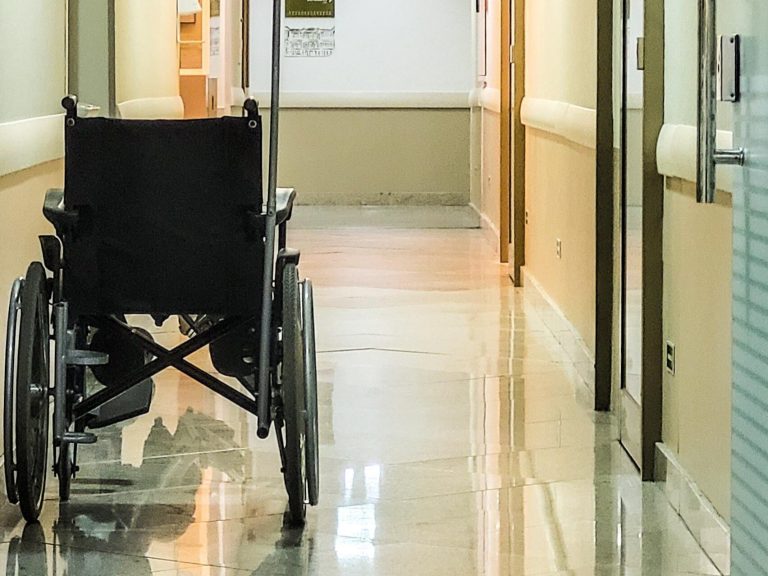Shortness of breath and breathing problems – causes, diagnosis and treatment

Shortness of breath and breathing problems are symptoms of many chronic and acute diseases. Usually, the unpleasant feeling of shortness of breath is associated with respiratory diseases (e.g. respiratory tract infections, bronchial asthma, chronic obstructive pulmonary disease), but it may also indicate disorders in the functioning of other organs and systems (e.g. heart failure). How to recognize shortness of breath? What are its symptoms? We explain.
- What are shortness of breath and breathing problems?
- Types of shortness of breath
- The most common causes of shortness of breath
- Symptoms of shortness of breath
- Diagnosis and treatment of shortness of breath
Shortness of breath is a difficult to describe feeling of lack of air and difficulty breathing. An attack of shortness of breath may manifest itself slightly differently in different patients, which is related to, among others, with its cause, the severity of symptoms and the type of shortness of breath experienced. Feeling short of breath and experiencing breathing problems is always an indication to see a doctor.
What are shortness of breath and breathing problems?
Shortness of breath and breathing problems are most often associated with acute and chronic respiratory diseases. Shortness of breath may also be a symptom of other diseases. Accompanied by, among others: heart disorders (e.g. acute heart failure, chronic heart failure, myocardial infarction). Shortness of breath and breathing problems may also cause neurological disorders (e.g. diaphragm paralysis), metabolic disorders (e.g. metabolic acidosis) and hematopoietic disorders (e.g. iron deficiency anemia). It is worth knowing that shortness of breath is also a common symptom of mental disorders – the feeling of shortness of breath accompanied by difficulty breathing and pain or pressure in the chest may indicate an anxiety-related panic attack.
In healthy people who lead a sedentary lifestyle, shortness of breath occurs as a reaction to increased physical activity. In this case, attacks of shortness of breath (shortness of breath, difficulty catching your breath, rapid breathing) appear only after moderate or intense physical exercise and disappear spontaneously.
Shortness of breath occurs as a result of hypoxia and disorders related to the removal of carbon dioxide from the body. It may be permanent or appear only in certain situations. Often, a feeling of shortness of breath and breathing problems accompanied by a cough are the first symptoms of an allergic reaction, which can be caused by foods, medications, animal hair and other inhaled allergens, as well as detergent fumes. Sometimes sudden shortness of breath is caused by the presence of a foreign body in the respiratory tract (e.g. shortness of breath after choking).
People suffering from shortness of breath require urgent medical consultation and first aid.
Types of shortness of breath
The division of shortness of breath takes into account:
-
shortness of breath at rest – the feeling of shortness of breath and breathing problems occur during rest and are not related to physical exercise;
-
shortness of breath on exertion – the feeling of shortness of breath and breathing problems occur during or after exercise and disappear or decrease at rest;
-
paroxysmal dyspnea (acute dyspnea),
-
chronic shortness of breath,
-
shortness of breath associated with the assumed position – shortness of breath occurring in a lying position (orthopnoë) and shortness of breath occurring in a sitting or standing position (platipnoë).
Shortness of breath may include problems with exhaling (expiratory dyspnea), which indicates problems with the lower respiratory tract and may be caused by, for example, low elasticity of the alveoli or narrowing of the bronchioles, and problems with inhalation (inspiratory dyspnea), which may indicate narrowing of the upper respiratory tract and other diseases. Inspiratory dyspnea is characteristic of heart failure; it may also indicate, for example, pulmonary hypertension and pulmonary embolism. Some patients are diagnosed with mixed dyspnea, which causes difficulty in both inhaling and exhaling.
Shortness of breath is often accompanied by wheezing, i.e. inspiratory stridor, which occurs when the upper respiratory tract is narrowed, and expiratory wheezing, which occurs when the lower respiratory tract narrows. Sometimes mixed wheezing occurs – inspiratory wheezing and respiratory wheezing.
The most common causes of shortness of breath
There are many causes of shortness of breath. The most common causes of shortness of breath include:
-
bronchial asthma (formerly called bronchial asthma),
-
chronic obstructive pulmonary disease (COPD),
-
diseases of the cardiovascular system (e.g. acute heart failure, chronic heart failure, myocarditis, heart defects, myocardial infarction),
-
upper respiratory tract infections (e.g. laryngitis, tracheitis),
-
lower respiratory tract infections (e.g. bronchitis, pneumonia),
-
pulmonary embolism,
-
primary cancer tumors and lung metastases.
Asthma is a chronic inflammatory disease of the lower respiratory tract. An attack of shortness of breath associated with asthma can be triggered by, for example, allergens, infections, stress and intense physical exercise. Characteristic symptoms of asthma include: paroxysmal shortness of breath, dry cough, wheezing, feeling of shortness of breath, tightness in the chest. An asthma attack often ends with the expectoration of large amounts of thick mucus.
COPD is a disease often associated with heavy smoking and air pollution, e.g. in the workplace. In the course of chronic obstructive pulmonary disease, the following symptoms occur: cough, wheezing and increased susceptibility to respiratory infections.
Heart failure may progress gradually – it is chronic heart failure, or it may be a sudden condition – acute heart failure. The causes of heart failure include, for example, hypertension, heart attack, heart valve diseases, heart rhythm disturbances or other heart muscle diseases. In the course of this disease, the heart muscle is unable to pump blood with adequate force, which results in hypoxia and blood circulation disorders. Symptoms of heart failure include: shortness of breath, swelling of the lower limbs, chest pain, palpitations, weakness, chronic fatigue.
Infections of the upper respiratory tract, especially the larynx and trachea, can also cause shortness of breath and breathing problems. Symptoms accompanying upper respiratory tract infections include: dry cough, sore throat, increased body temperature, wheezing, weakness.
Lower respiratory tract infections, e.g. bronchitis and pneumonia, are most often viral or bacterial. Lower respiratory tract infections are indicated by, among others: shortness of breath accompanied by chest pain, cough, wheezing, weakness and increased body temperature.
Pulmonary embolism is a disease caused by the blockage of the pulmonary arteries by a blood clot. Most often, embolism is related to thrombosis, vessel wall injury, surgery, thrombocythemia and long-term immobilization. Symptoms of pulmonary embolism include sudden, worsening shortness of breath, chest pain, cough, hemoptysis, cyanosis and impaired consciousness.
Other, less common causes of shortness of breath and breathing problems include:
-
anemia (low hemoglobin concentration),
-
pneumothorax (air in the pleural cavity),
-
diaphragm paralysis (weakening of the muscle responsible for respiratory movements due to nerve damage),
-
presence of a foreign body in the respiratory tract,
-
metabolic disorders (e.g. metabolic acidosis),
-
anxiety disorders (panic attack).
Symptoms of shortness of breath
Symptoms of shortness of breath are very characteristic. Breathing problems caused by various diseases include:
-
difficulty taking a breath,
-
cough,
-
increased respiratory rate,
-
shortness of breath,
-
involvement of additional respiratory muscles,
-
moving the wings of the nose while breathing,
-
feeling of anxiety,
-
dizziness,
-
cyanosis.
Increasing shortness of breath is life-threatening and requires immediate diagnosis and treatment.
Diagnosis and treatment of shortness of breath
Diagnosis of shortness of breath includes a history and physical examination. In a patient with shortness of breath, laboratory tests, imaging tests and functional tests are performed.
Treatment is selected based on the cause of shortness of breath and may include, for example, symptomatic and causal pharmacological treatment, oxygen therapy and respirator therapy if the patient’s condition worsens and breathing support is necessary. Patients with shortness of breath receive, among others: bronchodilators, anti-inflammatory preparations, drugs that help clear the lower respiratory tract of residual secretions, as well as antibiotics and other drugs that are tailored to the type of diagnosed disease. Pulmonary rehabilitation plays an important role in the treatment of acute and chronic lung diseases.
In the case of chronic diseases, e.g. bronchial asthma, it is necessary to follow the doctor’s instructions and regularly take medications that prevent further attacks and help avoid exacerbation of the disease.
Sources:
-
Szczeklik A., Internal diseases, Volume I, Medycyna Practical Publishing House, Kraków, 2005
-
Davidson, Internal diseases, Volume 2, Edra Urban & Partner Publishing House, 2020
-
Janicki K., Home medical guide, National Medical Publishing House PZWL, 1989






